9.8 Configuring Your Remote Connections
When you run GroupWise in Remote mode, you can connect to your Online GroupWise system through a modem connection, a network (direct) connection, or a TCP/IP connection. When you use Hit the Road to set up your Remote Mailbox, GroupWise creates the appropriate connections based on how you are currently running GroupWise. You can create new connections as well as change or delete existing ones.
This section contains the following topics:
9.8.1 Connections
You can switch among connection types if there are no pending requests on the connection you are switching from. For example, if you’re retrieving and sending items with a network connection and you disconnect before the transmission is complete, you should not switch to a modem connection to process the requests. Complete the original requests with the original connection.
This section contains the following topics:
Modem Connections
When you connect with a modem connection, you dial in to your Online GroupWise system over a phone line. You need to set up dialing information for each remote location. For example, in a hotel you often need to dial 9 to access an outside line, but at home you don’t. Each of these situations requires a separate remote location. For more information about setting dialing properties for each remote location, see your Windows documentation.
TCP/IP Connections
TCP/IP connections use an IP address and port to connect to your Online GroupWise system. If you use a toll-free Internet provider while you’re away from your office, you can avoid phone charges by using a TCP/IP connection. In addition, you don’t need to exit an Internet connection and hang up the phone to connect to your Online GroupWise system via a modem connection. You can use the same Internet connection to connect to your Online GroupWise system.
Network (Direct) Connections
When you’re at the office, you can run GroupWise in Remote mode with a network connection. A network connection is useful for quickly retrieving large amounts of information, such as your system address book.
Connection Status
When you use Hit the Road to update your Remote Mailbox before leaving the office or when you send and retrieve items remotely, the Connection Status window displays. This window lets you monitor the information transfer between your Online GroupWise system and your Remote Mailbox. To display detailed connection information, use . To display the number of requests the Online GroupWise system needs to process, use . To stop the information transfer anytime, use .
In addition to the Connection Status window, the icon in the Windows taskbar lets you know the status of your connection.
Connection Log
Use the Connection Log to display connection information and to troubleshoot connection problems. This log includes information about connection time, error messages, and so forth.
GroupWise uses three Connection Log files to log the connection information: remote1.log, remote2.log, and remote3.log. GroupWise uses the next log file each time you run GroupWise in Remote mode.
9.8.2 Creating a Modem Connection
Contact your system administrator for your gateway’s phone number, login ID, and password.
-
Click > > .
-
Click , click , then click .
-
Make sure is selected, then click .
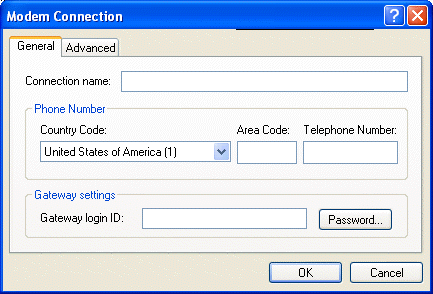
-
In the field, type a description.
-
Click the country code, then type the area code and phone number for the gateway to your GroupWise system.
-
Type the gateway login ID.
-
Click , type the gateway password, click , retype the password, then click .
-
Click the tab.
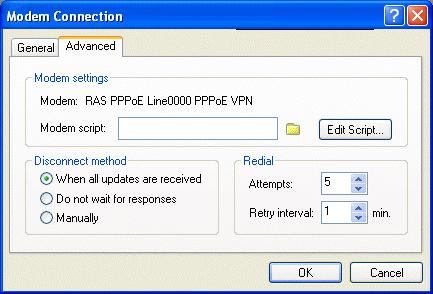
-
If your modem requires a script, click , then specify the necessary When Given and Respond With commands.
To save the script without changing its filename, click , then click .
or
To save the script with a new filename, click , then click .
-
To retrieve an existing script file, click
 , select the script file, then click .
, select the script file, then click .
-
Click a disconnect method.
-
In the box, specify the number of times to redial if the line is busy.
-
In the box, specify the time interval between each redial attempt.
-
Click , then click .
9.8.3 Creating a TCP/IP Connection
-
Click > > .
-
Click , click , then click .
-
Click , then click .
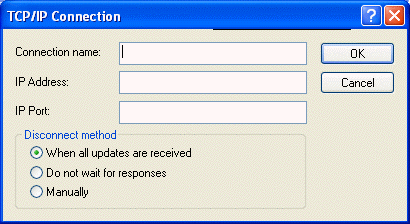
-
Type a descriptive name for the TCP/IP connection.
-
Type the IP address and port information provided by your system administrator.
Instead of an IP address, you can also type the DNS (Domain Name System) host name in the field. Check with your system administrator.
-
Click a disconnect method, click , then click .
9.8.4 Creating a Network Connection
-
Click > > .
-
Click , click , then click .
-
Click , then click .
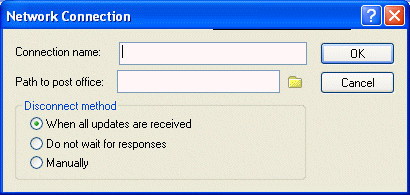
-
Type a descriptive name for the network connection.
-
Type the path to any post office directory in your GroupWise system.
Contact your system administrator for the path to your post office. You can also connect to any post office in your GroupWise system to access your Online Mailbox. You don’t need to connect to the post office containing your Online Mailbox.
-
Click a disconnect method, click , then click .
9.8.5 Copying a Remote Connection
-
Click > > .
-
Click , click , click the connection, then click .
-
Modify the connection, then click .
9.8.6 Editing a Remote Connection
-
Click > Send/Retrieve > .
-
Click , click , click the connection, then click .
-
Make the necessary changes, then click .
9.8.7 Deleting a Remote Connection
-
Click > > .
-
Click , click , then click the connection.
-
Click , then click .
9.8.8 Specifying Your Remote Location
-
Click > > , then click .
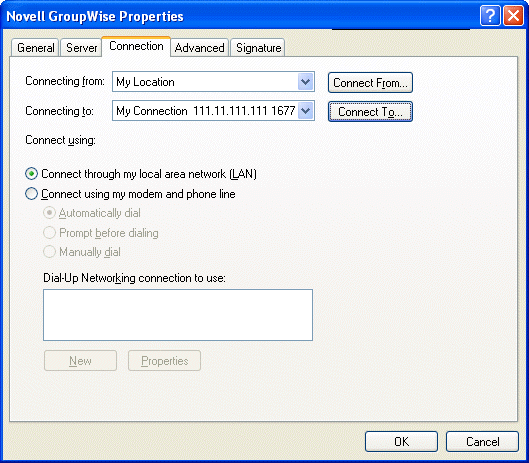
-
To select your remote location, click the drop-down list, then click the remote location.
-
To change the dialing properties of your modem, click Connect From, specify changes in the Dialing Properties dialog box, then click .
For help on specifying Dialing Properties, see your Windows documentation.



